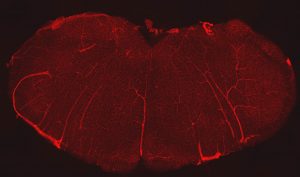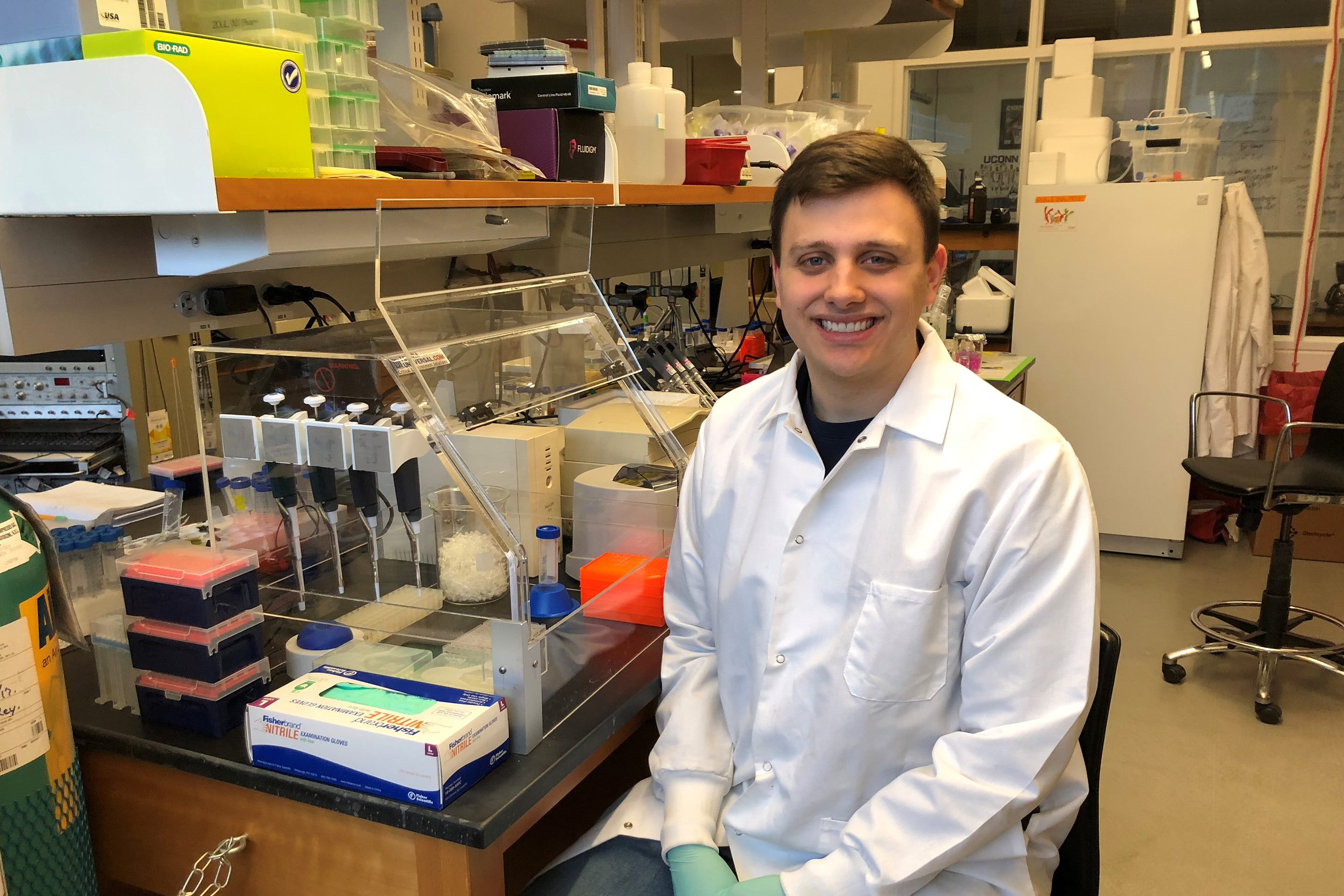“Undergraduates can publish original research.”
This statement made by Colin Cleary, a first year doctoral student in the Department of Physiology and Neurobiology (PNB) at the University of Connecticut, is certainly true, as Cleary’s own standout educational track proves.
Cleary was recently awarded a prestigious Ruth L. Kirschstein National Research Service Award (NRSA) Predoctoral Fellowship from the National Heart, Lung and Blood Institute. This project builds on work he started as an undergraduate in Professor Daniel Mulkey’s lab looking at mechanisms involved in the control of breathing.
With Cleary’s help, the Mulkey lab discovered that arterioles in the retrotrapezoid nucleus (RTN), an area of the brainstem which is responsible for controlling breathing in response to changes in carbon dioxide (CO2), behave differently than anywhere else in the body. Normally, arterioles dilate in response to an increase in waste products, like CO2 and acids, to flush these products out of our system. However, blood vessels in the RTN constrict in response to CO2 by a mechanism involving signaling of an enzyme called Adenosine triphosphate (ATP). This unusual arteriole response, as discovered by Cleary’s work, is mediated through astrocytes, a type of cell in the central nervous system.

As part of his NRSA Fellowship, Cleary will examine the effects of genetically deleting P2Y2, a receptor activated by ATP signals, from specific cell types involved in the regulation of vascular tone to determine how such a deletion affects respiratory activity. If the relationship between this gene and breathing is identified, it would represent the first vascular target for treating disordered breathing.
“Colin is an outstanding student in both the classroom and laboratory. He successfully obtained a pre-doctoral fellowship from the NIH – not an easy task since these are highly competitive and at the time of submission Colin had only just started graduate school,” Mulkey says. “But perhaps his greatest attribute is his passion for scientific inquiry. He is one of those rare bright-eyed and enthusiastic students that are fun to mentor.”
Cleary says he was initially drawn to Mulkey’s project because of how novel it was.
“It’s remarkable that there is so little known about something as fundamental as breathing and blood flow,” Cleary says. “For that same reason, it’s super exciting to be the first to catch a glimpse of how these processes work.”
Within his first semester in UConn’s PNB graduate program, Cleary submitted a grant of his own to perform follow-up studies in the molecular coupling mechanisms between neurons, astrocytes, and vasculature in the RTN.
“I was really interested in the project,” Cleary says. “I saw a lot of growth and learning I can do in basic science that I feel like I was lacking. If I can have a better understanding of science in general, that’ll help my long-term career goals whether I remain in academia or become a clinician.”
Cleary, who grew up in Woodbury, Connecticut, has had a passion for science since he was in elementary school, but he never envisioned himself going into research. Cleary says his plan was originally to go on to medical school after graduating last year.
“I wasn’t really interested in research as an undergrad,” Cleary says. “I was talking to [Dr. Mulkey] and he wanted someone to help finish the project. I started with that and I got really into it. It was sort of a natural transition for going into research.”
Cleary’s initial observations were debuted in the journal eLife last year.
Cleary received a dual degree in physiology and neurobiology and molecular and cell biology last spring. He received the distinction of Outstanding Senior in PNB at last year’s Biology Undergraduate Symposium. Cleary’s project will involve collaboration with The Jackson Laboratory for Genomic Medicine in Farmington, Connecticut but most of the research will be done in the Mulkey lab in Storrs. He will be staying at UConn to complete his doctoral thesis work, which has been fully funded for the next three years.



